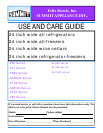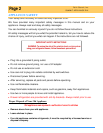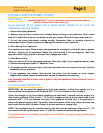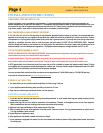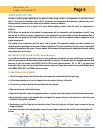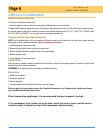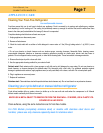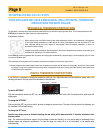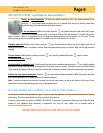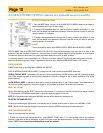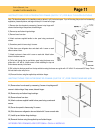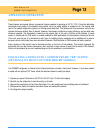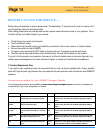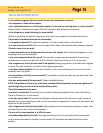
Felix Storch, Inc.
SUMMIT APPLIANCE DIV.
Page 15
TROUBLESHOOTING
Try the solutions suggested here first to avoid the cost of an unnecessary service call...
Your refrigerator or freezer will not operate:
• Has a household fuse blown or circuit breaker tripped, or is the outlet not receiving power or switch controlled?
Replace the fuse or reset the circuit breaker. Check the outlet with a small appliance you know works.
• Is the refrigerator or freezer defrosting (on some models)?
Recheck to see whether the appliance is operating in a few hours. It may regularly run an automatic defrost cycle.
There is water in the defrost drain pan (on some models):
• Is the appliance defrosting? The water will evaporate. It is normal for water to drip into the defrost pan.
• Is it more humid than normal? When it is humid, expect that the water in the defrost pan will take longer to evaporate.
The motor seems to run too much:
• Is there excessive frost or a package preventing the door from closing? Defrost and clean the appliance, or move
the package so the door closes properly.
• Is the room temperature hotter than normal? The motor will run longer under warm conditions. At normal room
temperatures, your motor will run about 40% to 80% of the time. Under warmer conditions, it will run even more.
• Has a large amount of food just been added to the appliance? Adding a large amount of food warms the refrigerator
or freezer. The motor normally will run longer to cool the appliance back down.
• Is the door closed completely? Push the door firmly shut. If it will not shut all the way, see “The door will not close
completely” later in this section.
• Are the condenser coils dirty (on some models)? This prevents air transfer and makes the motor work harder. Clean
the condenser coils.
Is the door gasket sealed all the way around? Contact a qualified technician.
NOTE: If the problem is not due to any of the above, remember that the compressor on your new appliance will
operate longer than your old one due to its high-efficiency motor.
The interior temperature is too warm:
• Are the air vents blocked? This prevents cold air movement. Move objects away from the air vents. See “Ensuring
Proper Air Circulation” for air vent locations.
• Is the door opened often? Be aware that the refrigerator or freezer will warm when this occurs. In order to keep the
appliance cool, try to get everything you need out of it at once, keep food organized so it is easy to find, and close the door
as soon as the food is removed.
• Has a large amount of food just been added? Adding a large amount of food warms the refrigerator or freezer. It can
take several hours to return to the normal temperature.
The door will not close completely or is difficult to open:
• Are food packages blocking the door? Rearrange containers so that they fit more tightly and take up less space.
• Are the shelves and basket out of position (on some models)? Put the shelves and basket back into their correct
positions.



